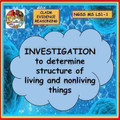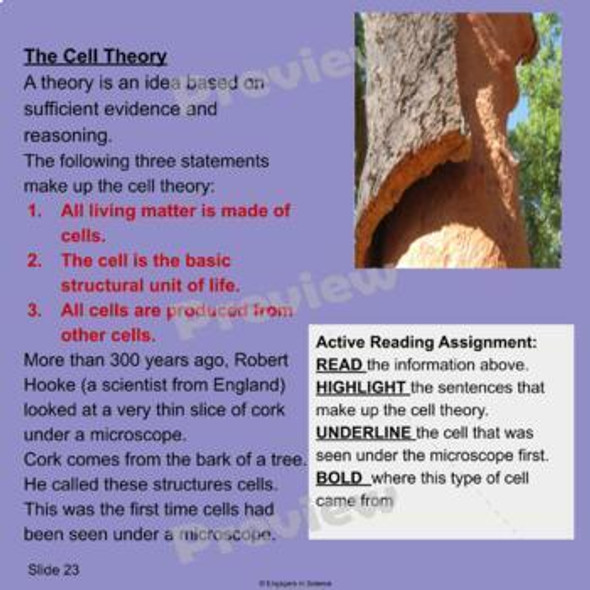Description
This is an engaging activity (Google and PDF versions) in which students start to construct their own understanding of what a cell is and how it differs from nonliving things. The students will carry out an investigation to answer two questions:
What is the structural difference between living and nonliving things?
What is the structural difference between animal and plant cells?
Students will design and implement their own experiments to answer these questions.
Ideally this should be done in the classroom but modifications have been included for online learners. For students in the classroom, they will need access to microscopes.. A list of recommended materials is listed below. Students will use the Claim, Evidence, and Reasoning structure (CER) when answering the above two questions. Possible student responses are given in the detailed teacher notes
Before starting this investigation, students will need to be aware of the cell theory, namely that all living matter is made of cells. They should also be able to distinguish between living and nonliving things. If you are doing this investigation in the classroom, they will also need to know how to use a microscope.
The two science and engineering practices below are incorporated in this investigation:
Planning and carrying out investigations.
Engaging in argument from evidence.
Included in this resource:
Teacher slides (7 slides)
Detailed teacher notes including all materials needed and possible sources of these materials (6 pages)
Student worksheet (3 pages)
Sample answers for student worksheet
Suggested materials needed for students in the classroom:
Microscopes
Blank slides, cover slips, toothpicks, iodine or methylene blue, onion, water plant (elodea), sand, and cork.
Examples of animal cells:
- Purchased human blood slide
- Cheek cell slide which students can prepare.
Examples of plant cells:
- Cork slide which can be purchased or prepared.
- Elodea which is a water plant used in aquariums that can be purchased from a pet store
- Onion slide which students can prepare
Examples of nonliving materials:
- Sand slide which students can prepare.
- Purchased slide of volcanic ash.
Suggested materials needed for online learners:
Pictures of what the following materials look like under the microscope - human blood, cheek cells, cork cells, onion cells, elodea cells, volcanic ash and sand.
Email any questions you have with subject line “Questions on structure of living and nonliving things” to us at engagersinscience@gmail.com and we’ll be happy to answer them















